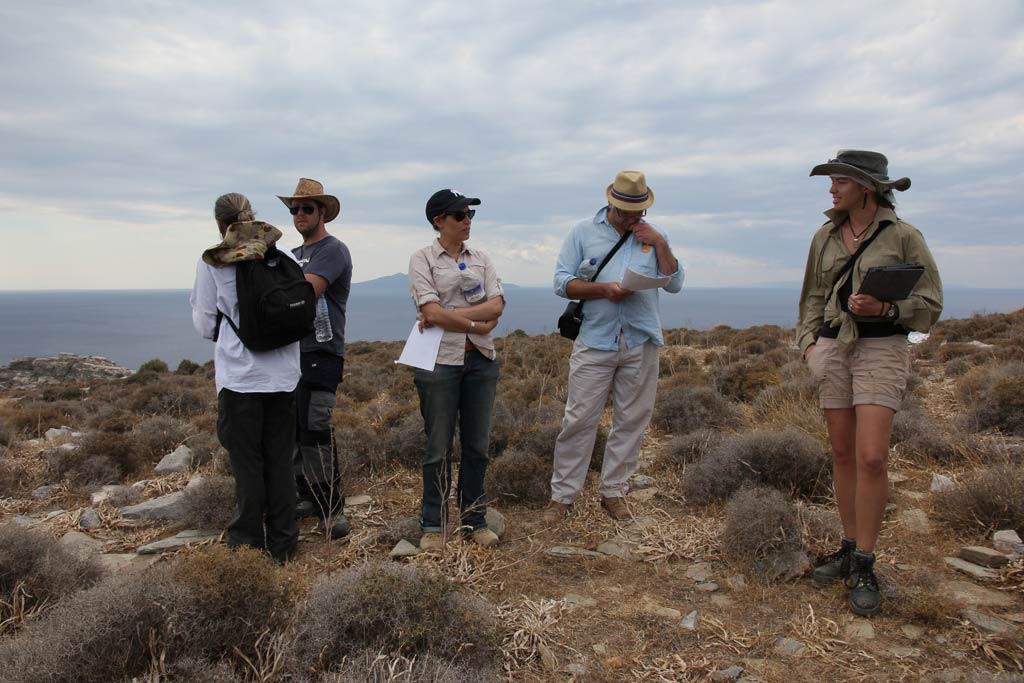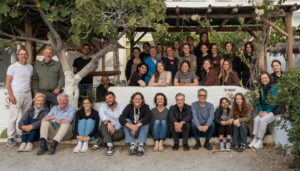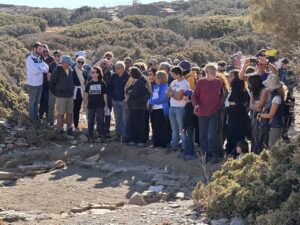by Irma Havlicek
Powerhouse Museum web producer
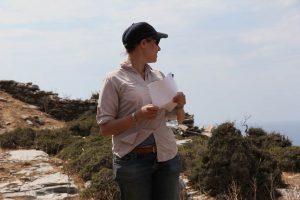
The site reconnaissance undertaken at Zagora in 2012 indicated there are a lot of architectural remains as well as a high concentration of industrial debris in the form of slag and also obsidian (relative to the rest of the site) at the northern end of the settlement, within and adjacent to the areas of the 1960s and 70s D-H excavation. This confirmed observations reported during the work of the 1960s and 70s.
The slag and obsidian finds indicate the possibility of industrial production having been done in the area. There were also pottery remains found nearby which may have washed down and away from this area.
Ivana Vetta, who is doing her Masters research into Geometric period metalworking and slag, is trench supervisor at excavation area 1 because she has the greatest interest and expertise in the industrial history of the site and of this period.
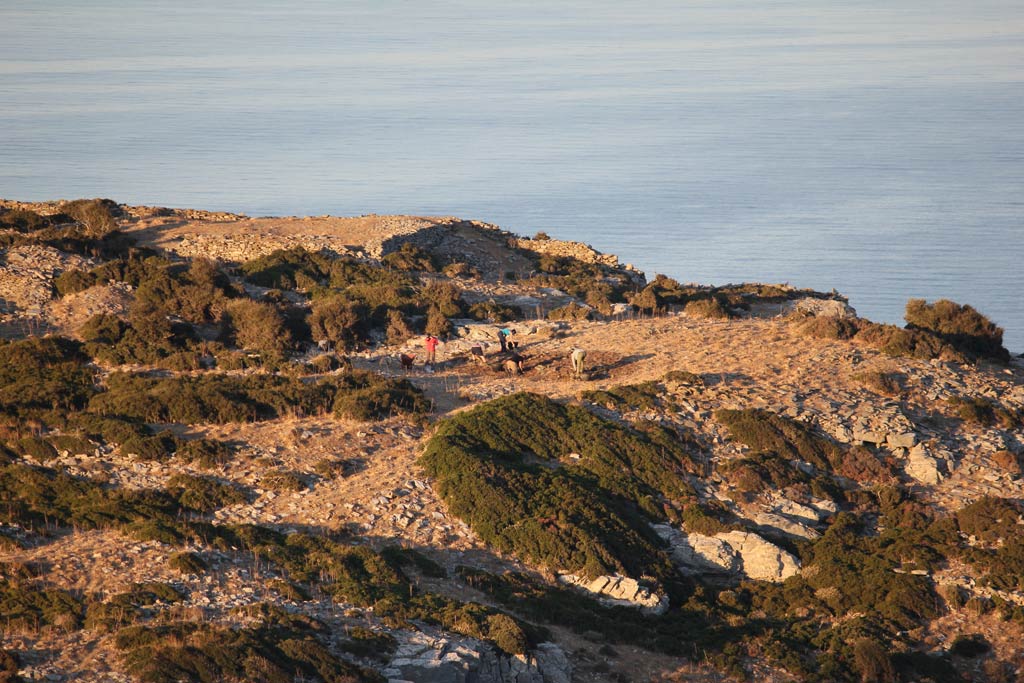
Excavation areas this year are being treated differently from the usual archaeological practice of determining an arbitrary 5 metre by 5 metre trench along the site grid lines. Instead, trenches are being identified as larger units of investigation within which particular areas are being selected for intensive excavation.
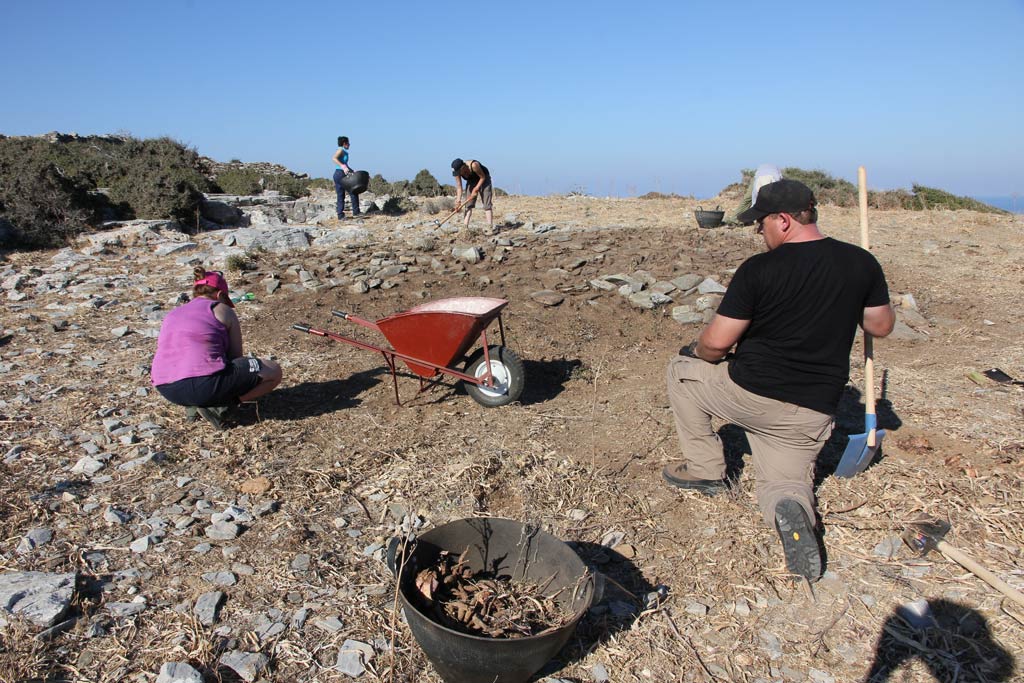
This means that the excavators have complete rooms or exterior spaces to study as discrete units rather than having these units only partially available for excavation because ancient buildings and their associated outdoor spaces are rarely neatly placed within an arbitrary 5 x 5 metre square.
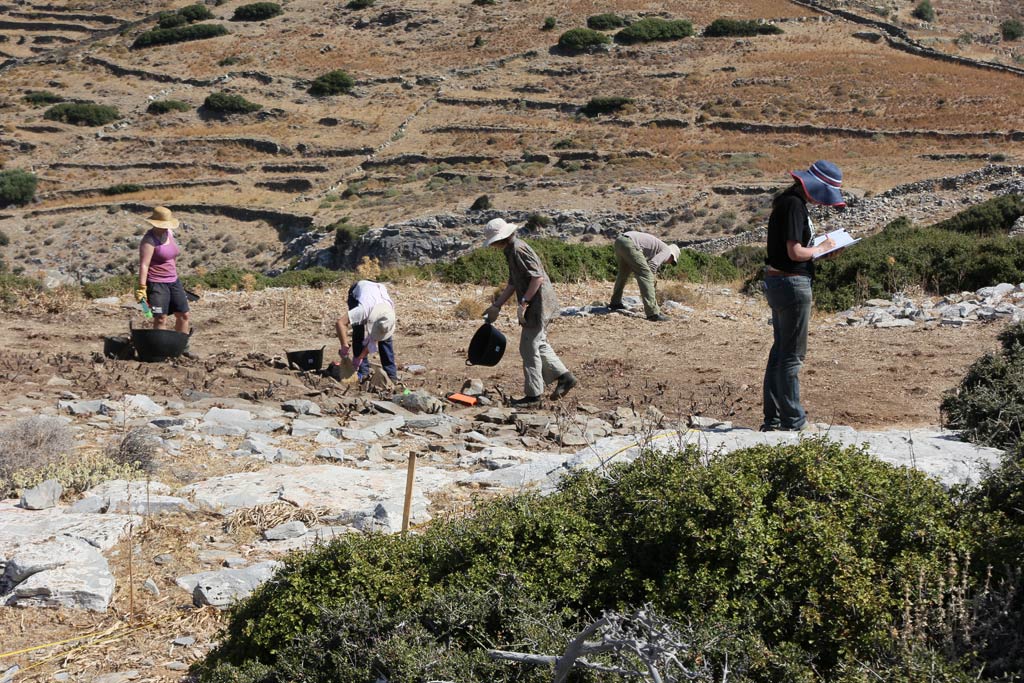
So the first stage of work on excavation area 1 (which took several days) was ground surface clearing of a 15 x 20 metre area to see if there appeared to be structures there, and then to decide on the precise location of intensive excavation areas.
Site architect, Richard Anderson conducted a topographical survey of the visible architectural remains to get those onto the plan this year.
